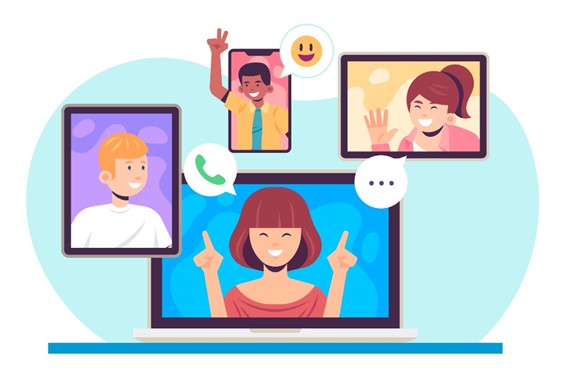Effective communication is essential for student engagement in the classroom, and the shift to online learning hasn't made the process any simpler. The good news is that the goal of communicating online doesn’t differ at all from communicating in person: to connect, share information, be heard, and be properly understood. When and how you interact with your students in your online classroom helps create a sense of community, which helps them feel connected to you and maintains their motivation and engagement levels. Finding the most effective ways to interact and communicate with your students should be one of your main goals as a teacher.
Experts, believe that between 70% and 93% of all communication is nonverbal. However, with the rise of distance education, many people mistakenly think that body language isn't as important anymore. Even though body language cues don't seem to be a part of virtual classrooms, non-verbal communication is still happening and is very important. Here we offer you some simple, but effective tips on how you can improve your non-verbal communication and body language in an online environment.
 Source: https://www.freepik.com/free-vector/friends-video-calling-concept_7607439.htm#query=non-verbal%20communication%20online&position=32&from_view=search&track=ais
Source: https://www.freepik.com/free-vector/friends-video-calling-concept_7607439.htm#query=non-verbal%20communication%20online&position=32&from_view=search&track=ais
Tip 1: Proper lighting and framing
Front light make sure that everyone can see you. This will help your students read the expressions on your face and give you the feeling of being there in person. If the light is coming from behind you, you won't be seen well.
Tip 2: Background
Think of your desk as a stage and the things on it as the things that go on the stage. Think about whether the things you can see in the background help or get in the way. A clean, simple background will help students pay attention to the class and not get distracted by external factors and movements.
Tip 3: Use your facial expressions
Similarly to how you would show your interest and attention in person, a genuine smile and affirmative head nod throughout the conversation will go a long way toward doing the same thing virtually. If someone says something interesting, you can give them a curious look. Maintaining constant, attentive eye contact is a crucial part of every successful conversation. Always be sure to gaze straight into the camera to create the impression of genuine eye contact.
Tip 4: Gestures and posture
While it may seem inconsequential, slouching on camera conveys a message of boredom to the viewer. Choose a chair that encourages you to sit up straight, square your shoulders, and try to avoid hiding your hands as you talk.
Are your arms crossed? This motion is meant to represent a tangible barrier between you and the speaker. Open arms are a sign of interest and openness.
While you talk, keep your hands away from your face and hair. This is not only distracting, but also makes the speaker look less certain than they really are. Instead, speak clearly and use your hands to gesture lightly alongside your words.
Tip 5: Read your audience
As your presentation goes on, keep an eye out for students who start to slouch, yawn, or dozing off. This is a sign that you've lost their attention. If, on the other hand, the group is excited and interested, people's body language may show that they want you to ask for their thoughts and ideas.